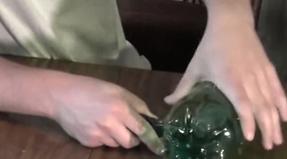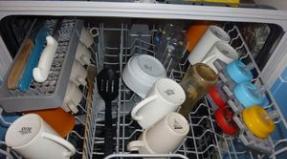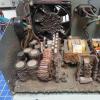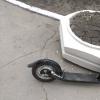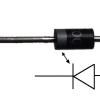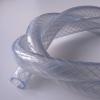Installation of a chimney for a gas boiler: a professional approach. Height and diameter of the chimney for solid fuel boilers Calculation of the chimney from a boiler in a private house
Installation of boiler equipment and its efficient operation is impossible without a chimney.
The correct choice of materials and compliance with standards when connecting is the key to your safety.
Gas services strictly control the commissioning process and may fine violators or forcibly disconnect the user from the gas supply.
Basic requirements for materials:
- fire resistance;
- anti-corrosion properties;
- resistance to the effects of acid formed as a result of the interaction of condensate with combustion products;
- long period of use.

Brick chimney. It has low draft and is prone to rapid destruction due to the formation of abundant condensation on the surface, which turns into an ice crust during the cold season. Ideal only for fireplaces or as a kind of cover for a stainless steel chimney.
Stainless steel. It has a lot of advantages, which makes it one of the first in popularity among its peers. It has good traction, fire resistance and anti-corrosion, and a long service life (especially dual-circuit models). The modular assembly method allows you to create steel chimneys of different configurations and is accessible even to a non-professional. Compatible with high-power boilers. Will serve you for 15 years.
Chimneys made of galvanized steel behave much worse during use. Galvanization is susceptible to rust.
Service life – maximum 5 years.
Ceramic chimney. Externally, it is as massive as brick. The installation option is strictly vertical only. Austrian manufacturers have developed models of ceramic chimneys with an external contour not only made of ceramics, but also of metal. They are much lighter, but when installing them you need to calculate the loads on the foundation and walls. Warranty up to 30 years.
Asbestos cement pipes. Short service life (5 years), difficult to install, not environmentally friendly. Even the low price of the material cannot serve as a compelling reason to choose such a chimney. Overheating can simply rupture the pipe. Suitable for occasional use in the countryside.

Coaxial- made of aluminum in the form of two sandwich pipes with different diameters, located one inside the other. The external one is intended for supplying air, and the internal one is for removing combustion products. The structure is prefabricated. The location is most often horizontal.
Advantages of a coaxial chimney:
- Safety
- Increased efficiency of the heating system
- Environmental friendliness
Chimney elements

Regardless of the material, the design includes the following elements:
- Tee with revision— a fitting for condensate is installed at the bottom of the tee
- Adapter for connecting the gas boiler pipe and the chimney
- Fastenings- brackets and clamps
- Cone shaped tip
- Bends— installed no further than 2 meters from the beginning, otherwise the boiler draft is reduced;
- Feedthrough
- Telescopic pipes
Size Requirements
- Smoke channel should not contain ledges and be positioned strictly vertically. With a narrowed cross-section, a significant reduction in draft occurs, and when using pipes with a large diameter, it is possible to blow into the boiler chamber, with its subsequent attenuation.
- Sectional area of the chimney pipe should not be smaller than the area of the pipe through which the chimney is connected to the boiler.
How to calculate the chimney diameter
Key parameters- cross-sectional area (outlet F cm2).
The calculation is made using the formula F = (K ∙ Q) / (4.19 ∙ √ˉ N), Where:
K- coefficient calculated empirically (0.02-0.03);
Q- performance indicator of the gas appliance (indicated in the technical characteristics of the boiler);
N- chimney height.
The resulting number is adjusted by building codes and regulations.
For example, if brick is used, then the cross-section is 0.5 x 0.5 material.
For asbestos cement, the diameter is at least 10 cm.
Diameter of round chimney with a boiler power of 24 kW it should be 120 mm, 30 kW - 130 mm, 45 kW - 170 mm, 55 kW - 190 mm, 80 kW - 220 mm and 100 kW - 230 mm.
The minimum cross-section of rectangular channels depends on the thermal power of the boiler:
- Up to 3.5 kW - 14 by 14 cm.
- 3.5 to 5.2 kW - 14 by 20 cm.
- From 5.2 to 7.3 kW - 14 by 27 cm.
Design rules for boilers with natural removal of combustion products

- The chimney pipe must be located above the ridge of the roof, is at least 0.5 meters higher than it, provided that its axis is close to the ridge or parapet (less than 1 m and no more than 1.5 m).
- If the pipe is located further from the ridge (from 1.5 m to 3 m), then its height should be level with the ridge.
- When the chimney is located at a distance of more than 3 m, its height must not exceed the boundary of a line laid down from the ridge at an angle of 10° to the horizontal.
- If you have a flat roof, the height of your chimney should also have a minimum limit of 0.5 m, and in the case of a combined roof – 2 m.
A smoke removal pipe outside the building cannot be erected without insulation: the resulting condensate will destroy the chimney.
- The system for ejecting combustion products must be fixed to the wall at intervals of no more than 2.5 meters, in areas with a slope - every 1.5 meters.
- Clamp must be used on any connecting section of an insulated chimney.
- Chimney elbow must have a slope angle of at least 15 ° and no more than 90 ° (no more than three rotary bends in the system are allowed). The vertical section following the turn must be clearly secured with fastenings. It is prohibited to load inclined sections of the pipe or its bends.

- It is necessary to equip the chimney with a condensate drain, which must be available for service.
- The chimney must be insulated from flammable materials using brickwork or asbestos board. The distance from the connecting pipe to flammable surfaces must be at least 25 cm, and if a protective layer is applied - from 10 to 5 cm.
- Stable traction can be ensured, if you build a pipe above the wind pressure zone.

- Smoke exhaust systems built inside the building do not need to be additionally insulated, but it is necessary to take care of the tightness and ventilation system. Toxic smoke can easily seep even through the brickwork of the protective casing.
- Areas located outside the structure are insulated. In the absence of thermal insulation, the gases quickly cool, the draft decreases, and the boiler power drops. Condensation forms on the walls.
Requirements for installation of coaxial chimneys

When installing the smoke duct of such boilers, it is necessary to keep in mind that:
- When the length of the coaxial pipe is no more than 1 meter, it is necessary to install a tapering diaphragm on the air duct. The power of the fan in the chimney is designed for a certain pipe length and, if it is less, there will be a loss of draft with all the ensuing consequences.
- The pipe is located in a horizontal plane, but should still have a slope of 1 cm for each meter of total length and no more than two knees.
- Pipe head can protrude outward no more than the length of its tip - to protect against freezing, and not lower than 2 meters from the surface of the earth.
What do SNiPs say?
The installation of smoke ducts for gas boilers is regulated SNiP 2.04.05-91, and DBN V.2.5-20-2001
If you comply with all requirements during installation work, you can be sure that the gas service specialists will not have any questions for you. On cold winter evenings, your family will be warm and safe.
To learn how to choose and install a chimney correctly, watch the video:
26.10.2017
2669
Pechnik (Moscow)
The diameter of the chimney for a gas boiler is one of the main values, the calculation of which must be made by a professional or taking into account generally accepted standards and fire safety requirements. After reading this article, as well as familiarizing yourself with the photo selection presented by us, you will be able to perform all the necessary calculations with your own hands, without the help of a professional.
Stages of calculations
Calculation of the chimney diameter for a gas boiler is carried out in several stages, which you can find out in more detail in the table below:
|
Stagedness |
Detailed Descriptions |
|
Performing installation and marking |
Calculation of the chimney diameter for a solid fuel boiler or gas equipment is carried out before any installation and installation work is performed. Markings must be applied only in accordance with previously drawn up instructions or drawings. Also find out about that. What cross-sectional size the chimney should have can be found in the technical documentation supplied with the heating boiler. Also, surface markings are applied taking into account such criteria as the height and dimensions of the system. The internal part of the structure includes the roofing pie and various ceilings. External ones are external walls and a coaxial type chimney system. |
|
|
The calculation of the chimney for a solid fuel boiler should be correctly displayed at the cutting stage. Surely you will need to make cuts and create various openings in the walls and ceilings of the house. |
|
Correct connections
|
The correct dimensions of the chimney for a gas boiler allow various elements and fittings to be easily connected and mated together. Thus, the adapter, or otherwise the adapter, must be connected to the pipe. Also, any design consists of elements such as revisions and tees. The space between the ceilings is supplemented with special pipes, and all joints and connections are reinforced and secured with clamps, the pitch of which is about two meters. For additional fixation, the structure is also reinforced with brackets, the distance between which should not be more than four meters. |
|
Product of insulation
|
The price for installing and assembling a chimney system is quite high, since during the work it is necessary to take into account a lot of nuances and rules. At the last stage, you need to secure the correct assembly and calculations by performing insulation. To do this, choose only fireproof, environmentally friendly materials. |
Things to consider
Without knowing what chimney diameter for a solid fuel boiler you should choose, you first need to familiarize yourself with the basic requirements for such exhaust systems and be sure to take them into account in the future:
- The basis is taken from the requirements and rules specified and described in SNiPs;
- The chimney system must have its own individual channel, through which all combustion and decay products will be removed. If necessary, you can simultaneously connect several devices to it. The distance between them should not be less than 75 centimeters;
- Pipes must have perfect tightness. Gas should not pass through small openings and enter the room. That is why the use of a brick chimney for gas equipment is unacceptable;
- The selected material must be able to withstand regular exposure to moisture (condensation), which is formed as a result of sudden temperature changes, especially in the winter;
- The system must have a perfectly smooth surface of the internal walls, with a minimum amount of roughness and irregularities. The best section is round.
Important:calculating the height of the chimney of a gas boileris made taking into account the design features of the house itself, as well as the power and functionality of the heating equipment. No less important is the presence of a thermal insulation layer. This promotes rapid and uniform heating of the pipes, as a result of which the amount of condensate formed is significantly reduced.
The instructions, which are used as a basis by all professionals, say that the channel must have a cross-section equal to the gas exhaust pipe. If the cross-section of the output element has a diameter of 17 centimeters, then the pipe itself should have a similar size.
An illustrative example:chimney diameter for boiler donwill be determined as follows. It is important to take into account such an indicator as the cross section, which must be measured in square centimeters orF.
To make calculations we use the universal formula:
F = ( K∙Q) / (4.19 ∙ √H)
Explanation:
- The K number is equal to a numerical value from 0.02 to 0.03;
- The numerical value of the Q indicator (performance) can be found in the technical documentation supplied with the boiler equipment;
- H is the height of the chimney system.

Basics of operation and functioning of various exhaust devices
The final final value must be adjusted in accordance with established and generally accepted standards and fire safety requirements. To familiarize yourself with them, it is recommended to go to the appropriate website or watch the video in this article.
For brick systems, it is important to take into account that the section size is half by half brick. For chimneys made of asbestos cement (not recommended!), the diameter will be about 100.00 mm.
Installation of a chimney with an open system
For this variation, we recommend choosing a coaxial exhaust mechanism. It features simpler installation. However, one should take into account the fact that the outlet pipe must have smaller dimensions (diameter) than the pipes of the structure themselves.
Basic criteria and rules for performing installation work:
- Coaxial type systems are located in a strictly horizontal direction (more about: horizontal chimney);
- The distance from the pipe to ground level must be at least two meters;
- The installed hood is installed as far as possible from the windows, doors and ventilation ducts of the house. The optimal safe distance is 1.5-2.5 meters (from the horizontal element);
- The minimum length of a vertical section is 1-1.5 meters;
- Do not place the chimney in such a way that there are other buildings, walls, barriers, fences nearby (the minimum distance to such objects should be 1.5 meters);
- The exhaust system should not extend into an arch, tunnel or passage;
- To ensure that condensate does not accumulate in large quantities in the structure and is able to gradually flow down, the pipes are installed at a slight inclination (from 5 to 14 degrees).
Installation of an open structure
Before installation, you must familiarize yourself with the basic standards and requirements for it:
- Installation should be as simple as possible, with a minimum number of elbows (3 pieces) and bends;
- For insulation and assembly of the device, exclusively non-flammable materials are used;
- To reduce the amount of accumulated condensate, the inner surface of the pipes must be insulated with special heat-insulating materials;
- For subsequent maintenance and convenient removal of soot and soot from the inner surface of the pipes, provide in advance for the presence of a special damper in the chimney design;
- Condensate is also collected in a collection tank specially equipped for these purposes;
- Compare the required height and diameter of the pipes with the recommended values specified by the manufacturer in the instructions for the heating boiler;
- All areas must be vertical, tilting no more than 25-35 degrees is allowed;
- The upper part is complemented by a special protective umbrella; it does not allow dirt and precipitation to penetrate inside the installation;
- For a standard curved roof, the height of the chimney above the ridge level should be about 500-800 centimeters. For flat roofs, this figure increases to 2-2.5 meters.
The height of the pipe above the roof level must be determined individually
Tip: if you want to insulate a chimney yourself, we recommend using one of the following materials to choose from: bricks, asbestos cement, lime mortar. In addition, carefully seal each joint and connection of pipes so that gas does not enter the room under any circumstances!
Several construction options:
- Use of bricks. Not the most suitable option in this situation. Brick does not tolerate contact with the resulting combustion products and soon begins to collapse, the structure loses its tightness. The option is not durable and has a high degree of safety;
- Steel pipes. Steel tolerates contact with combustion products well, as well as strong heating and sudden temperature changes, which allows it to be used for both internal and external walls of pipes;
- Aluminum. Has similar characteristics and scope of application to steel;
- Enameled connections. The most convenient and practical option, which, as a rule, does not require insulation, since it initially has it.
In general, in order to construct an open type chimney, you will need the following materials: bricks, concrete mortar and containers for mixing it, trowels of a suitable size, building level, Steel (from which the protective dome (umbrella) is assembled and the interior of the pipes is finished ).
The diameter of the chimney for a gas boiler plays a key role and affects the quality, efficiency, and safety of the heating unit.
Content- Device, classification and requirements
- Calculation of height and section size
- Installation and connection of the chimney pipe
Any owner of a private home who decides to use a solid fuel boiler as a heating source is faced with the need to remove volatile combustion products. Traditionally, this function in residential buildings is performed by the chimney. In this review we will try to figure out what types of chimneys there are, how to calculate and install them. I hope this article will help you choose the necessary parameters for the chimney pipe, as well as install it and connect it to a solid fuel boiler.
Device, classification and requirements
A chimney or chimney is a special channel used in various buildings to remove volatile combustion products of solid fuels. It is usually a straight pipe of round cross-section, as this allows for maximum draft and minimal accumulation of soot on the walls of the chimney pipe.
Various requirements apply to the gas exhaust system, such as:
- Good traction;
- Availability of thermal insulation;
- Easy installation and maintenance;
- Long service life;
- Corrosion resistance;
- Smoothness of the inner walls;
- Fire safety;
- Aesthetic appeal;
When choosing a chimney for a solid fuel boiler, you should take into account the temperature of the combustion products. Depending on this parameter, you should select the material of the chimney pipe. Modern manufacturers produce modular chimneys from materials such as:
- stainless steel;
- ceramics;
- plastic;
- glass;
The temperature of the flue gases at the outlet of the TT boiler can reach 600 degrees Celsius. Therefore, a steel and ceramic chimney is quite suitable for use together with. The use of glass and plastic chimneys is not allowed, since these materials are designed for significantly lower gas temperatures.
Separately, it is worth noting the classic brick chimney. The aggressive environment that arises inside such a structure quickly renders it unusable. That is why they give way to more modern devices.
Most often, stainless steel is used as the material for the manufacture of chimney pipes. The use of steel gives such a device a number of undeniable advantages:
- has low weight compared to brick;
- easy to install and install;
- does not require foundation construction;
 Photo 2: Installation of a ceramic chimney in a country house
Photo 2: Installation of a ceramic chimney in a country house Stainless steel chimneys are divided into the following types according to the type of construction:
Single wall
Such chimneys are a regular steel pipe. The advantage of this design is its low cost. The main disadvantage is the formation of condensation on the inner surface and, as a consequence, its freezing at sub-zero temperatures.
Double-walled (or double-circuit)
The design of such a chimney is a “pipe-in-pipe” design. A smaller diameter pipe is placed inside the main pipe, and the space between them is filled with heat-insulating material. The advantage of this design is the presence of thermal insulation that protects the chimney from the formation of condensation, but the disadvantage is that the price of such devices is much higher.
The chimney design in the form of a sandwich pipe has recently gained particular popularity. This design is a chimney assembled from individual meter-long pipes, the joints of which are equipped with heat-insulating material.
 Photo 3: Stainless steel chimney sandwich design
Photo 3: Stainless steel chimney sandwich design Special requirements are placed on the wall thickness of a steel chimney. When used in conjunction with TT boilers, the wall thickness of the chimney should be 1 mm or more.
Ceramic chimneys are also used to remove combustion products from a solid fuel boiler. Like steel, they are resistant to high temperatures and aggressive environments. The thickness of their walls is much greater (1.5 cm), and therefore they are much heavier and require installation on a foundation. Also, ceramic chimneys must be strictly vertical. The presence of various bends is excluded. This feature in some cases makes the installation and installation of such a chimney impossible.
Return to contentsCalculation of height and section size
The correct length and diameter of the chimney is extremely important. The use of a chimney pipe that is too short leads to poor draft, incomplete combustion of fuel and may allow volatile combustion products to enter the room. Therefore, you should carefully monitor compliance with the required height and cross-sectional area of the chimney.
 Photo 4: Example of connecting a chimney system to a solid fuel boiler
Photo 4: Example of connecting a chimney system to a solid fuel boiler Most indicate the minimum permissible chimney height in the technical documentation for the product. The diameter of the chimney should not be less than the diameter of the boiler smoke outlet pipe, the size of which is usually indicated in the device passport or can be easily measured. Typically, for household solid fuel boilers with a power of 18-70 kW, the chimney diameter is approximately 130-200 mm. Below is a table of chimney heights and diameters for low- and medium-power boilers, which are usually used for heating cottages and small country houses:
At high chimney heights, draft deterioration may occur. In such cases, you need to buy and install a smoke exhauster for a household solid fuel boiler.
 Photo 5: Smoke exhauster for domestic solid fuel boilers
Photo 5: Smoke exhauster for domestic solid fuel boilers If the temperature of the exhaust gases is known ( Gas Temp(K)) and static draft, then the minimum permissible chimney height can be calculated using the formula:
Height(m) = StatThrust(Pa)*GasTemp(K)*AirTemp(K)/3459*(GasTemp(K)-1.1*AirTemp(K))
StatThrust(Pa)— static thrust in Pascals;
Air Temp(K)— outside air temperature in Kelvin. For calculations, it is better to use the highest average annual temperature;
Gas Temp(K)— temperature of combustion products in Kelvin at the outlet of the solid fuel boiler;
Example: Let's calculate the height of the chimney for a solid fuel boiler Buderus Logano G221 installed in the Moscow region. The initial data for the calculation are as follows:
Power, kWt): 20kW;
StatThrust(Pa): 20Pa;
Gas Temp(K): 523K (250 degrees Celsius);
Air Temp(K): 291K (average daily temperature in the Moscow region for July is 18 degrees Celsius);
For safe operation of a gas boiler, it is necessary to ensure complete removal of combustion products. If the chimney diameter is incorrectly selected, they can enter the room, which will lead to carbon monoxide poisoning. The danger is aggravated by the fact that combustion products are odorless and colorless, so it is impossible to determine the location of the leak without a special device.
The durability of the channel depends on the material. It must withstand high temperatures, moisture and acid produced during gas combustion. The material should be chosen light enough so that you do not have to strengthen the walls and foundation of the building. For production are used:
- Stainless steel– resistant to most types of corrosion, not heavy, considered the best option. Provides reliable traction for 15 years.
- Aluminum- also durable, but due to low mechanical strength it is used only for interior decoration.
- Enameled pipes– are produced with built-in thermal insulation, which simplifies the installation of the chimney.
- Cink Steel– will last a maximum of 5 years, as it will lose its tightness under the influence of fumes of high acidity.
- Ceramics– the service life of such products reaches 30 years. European manufacturers reinforce them with beautiful steel frames. However, due to the heavy weight, sometimes it is necessary to take measures to strengthen the walls and foundation. Such structures provide maximum traction only in a vertical position, which is not always possible to achieve.
- Sandwich chimneys– consist of two pipes inserted into one another, with insulation between them. Due to 2 layers of metal they are highly reliable. Durability depends on the material of the inner tube. No additional insulation is required during installation.
- Coaxial chimneys- also consist of two pipes, but the space between them is used to supply air to closed-type gas boilers from the street. They are produced in modules, convenient for quick assembly.
- Brick chimneys- turn out to be heavy, so they require a foundation. Due to the rough walls, the draft is not at its best, which leads to the accumulation of soot on them. Therefore, the pipe will have to be cleaned twice a year. In addition, brick is hygroscopic, absorbs condensation and quickly collapses. But a preserved chimney can be used as a protective frame if you insert a stainless steel pipe into it with a condensate collector at the bottom.
- Asbestos cement channels- cheap, but rarely used, as they are prone to cracking and releasing carcinogens when overheated.
Depending on the installation method, chimneys can be external or internal. Which one is better to choose depends on the type of building and location of the boiler. External channels lead horizontally to the street and are attached to the external wall. They are easier to install; you just need to follow the fire safety rules when arranging the hole if the house is built from flammable materials. However, careful insulation and installation of a condensate collector will be required.
The internal chimney is discharged through the ceilings and roof, which is not always acceptable in multi-story buildings. Installation is complicated by the installation of several special passage units that ensure fire safety.

Calculation of the chimney cross-section for a gas boiler
To accurately determine the parameters of the system through which combustion products are removed, complex calculations are made. This takes into account the shape and material of the pipe, the average temperatures outside and inside, the roughness of the walls, and more. However, the cross-section of the chimney (F, m²) can be calculated with sufficient accuracy for practical purposes using the formula:
F = (K ∙ Q) / (4.19 ∙ √ˉ N),
wherein:
- K– coefficient from 0.02 to 0.03;
- Q– boiler power in kW, indicated in the technical passport;
- N– chimney height in meters.
The result obtained must be checked for compliance with SNIP 2.04.05-91 and, if necessary, adjusted. The regulatory document states that, depending on the power, the internal cross-section of a round chimney should be:
It is possible to install square-shaped pipes if their parameters meet the requirements, but it should be taken into account that they tend to accumulate soot. Therefore, such products will have to be cleaned more often, otherwise reducing the hole will negatively affect the operation of the system. If two boilers are supposed to be connected to the chimney, the cross-section is calculated based on their total maximum power.
Determining the size of the chimney for an open type gas boiler
Unlike the previously mentioned units, such devices receive combustion air from the premises where they are located. To determine the transverse parameter, use two simple methods:
- On the installed boiler, they are guided by the size of the pipe for removing combustion products. The cross-section of the chimney should be equal to it or slightly larger.
- When there is no boiler yet, but its characteristics are known, or a chimney is installed for two heaters, its cross-section is determined by multiplying the power by 5.5. The result is obtained in cm 2. For calculations, the passport parameter is taken, not the thermal parameter, which can be an order of magnitude larger.
To calculate the diameter of the chimney, use the formula for the area of a circle S = πr². Then r = √S/π. Substituting the previous result, you get the radius in cm. Multiplying by 2 and 10, you determine the diameter in mm. The calculated result is adjusted according to the table above.

Conclusion
Since human health and fire safety depend on the correct calculation of the chimney cross-section, it is better to overestimate the obtained result a little. Gas service workers usually turn a blind eye to this when issuing permission to operate a boiler. But if the cross-section is less than the standard, then a ban will be imposed, which means that all the work will have to be done again with associated costs.
Continuing the topic I started, I think I’ll discuss a chimney for a solid fuel boiler in this review. Why him? Because this type of “smoke pipe” will be universal. By purchasing, for example, sections of sandwiches with good insulation, and installing a chimney for a TT boiler, you “kill four birds with one stone” at once - it will be suitable for installing a wood-burning, coal, pellet boiler, as well as for installing a steel or cast-iron heating stove.
The same applies to single-wall stainless steel pipes with a wall thickness of 0.8 - 1.0 mm. That is, the chimney can be used not only for heat generator heat generators, but also for some other types of boiler equipment.
Although, as you know, very good is also not good. Some models of gas and diesel boilers do not work quite correctly with old chimneys. The cause of this is the excessively large diameter of the chimney for the solid fuel boiler that was installed before.
So, let's get started.
“Smoke stack” in section or “Where is the diagram, brother?”
This paragraph provides a diagram of a chimney for a solid fuel boiler - it is quite universal and can be used in many installation cases. This option is suitable for installation in any type of house, with any type of wall material - from brick and monolithic concrete to a wooden frame.

A typical chimney diagram for a solid fuel boiler implies the possibility of leading the chimney through the wall to the side and then upward, or through the ceilings vertically upward and then through the roof.

If we talk about the effective removal of flue gases from the furnace, the main factors influencing the efficiency of this process will be:
- Chimney height
- Chimney diameter
- Length of acceleration section
- Chimney insulation
These 4 points are important, the rest are optional.
How much to hang in grams, or choose the height and diameter of the chimney
Let's start with the first two points. The height of the chimney is a critical parameter. What does it mean? This means that if your chimney is not high enough, the draft in the boiler firebox will also be insufficient. This can lead not only to poor combustion of fuel, but also to “draught reversal”, when, instead of being discharged outside, flue gases will penetrate indoors.
This is fraught with the release of carbon monoxide into living spaces, which is deadly to humans.
Carbon monoxide has neither color nor odor. Therefore, you can get burned out unnoticeably and die without waking up.
Have I convinced you that there is no need to save on the “extra” meter of pipe?

The required chimney height for a solid fuel boiler or for a heating stove, for each individual model of boiler or stove, as well as for different thermal powers, is required to be specified in the passport. At the same time, sometimes the “minimum” height is written in the passport, and sometimes “just” the height.
The minimum height must be observed, and “just” the height is the lower limit for conducting experiments with the draft of the TT boiler. Does it pull poorly at the minimum height? We add another half meter to a meter of chimney. And so on.
When conducting these experiments, do not forget that in the summer, especially in damp, warm weather, the draft will be worse than in the frosty and dry winter. Therefore, if the chimney of a solid fuel boiler is installed in winter, you must understand that in summer the draft at the set height will be worse than at the time of installation.

The minimum chimney diameter for a solid fuel boiler or stove is also indicated in the passport for the purchased boiler or stove. If you don’t have a passport, then there are now tables for almost any model on the Internet.
You can slightly narrow or widen the cross-section of the chimney by changing the diameter by no more than 5 mm in one direction or the other.
This won't affect traction much. If, for example, you take 120mm pipes instead of 150mm, you can easily get problems with efficient fuel combustion in some models of TT boilers and.
This effect is usually “treated” by lengthening the chimney, however, increasing the height does not always lead to the desired result.

As for an excessive increase in the diameter of the chimney, this risks the fact that the flue gases, without having time to give up heat to the heat exchanger, will quickly leave the boiler furnace. What is called “heat will fly away into the chimney.”
Acceleration section of the chimney
In the case of using an acceleration section, the solid fuel boiler can be connected to the chimney vertically or horizontally. Immediately after the initial short branch pipe or tee there will be at least 1 meter of accelerating vertical pipe. It serves to “launch” traction. Next, you can install horizontal sections and branches, but no more than 0.5 meters in length.
This means that the outgoing flue gases, entering the chimney, already have an extremely low temperature. And if they continue to give off heat through the walls of the pipe into the surrounding rooms or street air, then their movement will slow down more and more. This means that again there will be no normal draft in the chimney.

To prevent this from happening, the chimney pipe for a solid fuel boiler or stove must be insulated. For this purpose, the easiest way is to use ready-made sandwiches, which are double cylinders made of stainless steel, the space between which is filled with basalt insulation or vermiculite.
The better the sandwich is insulated, the less temperature the outgoing flue gases lose, and the better the draft in such a chimney compared to an uninsulated one.
A chimney pipe for a solid fuel boiler, assembled from sandwiches of 1.0 and 0.5 meters, has a number of other advantages, in addition to the main one - improving draft:
- Easy to assemble, because easy installation of sections of 0.5 and 1.0 meters is possible
- Corrosive
- Convenient removal of condensate from the chimney using a drain valve on the tee
- Attractive appearance, you can run a pipe made of sandwiches along the facade of the house

In addition to using sandwiches, an insulated chimney for a solid fuel boiler can be obtained in 3 more ways:
- Insulate the old chimney with basalt insulation or vermiculite.
- Use an old brick pipe from a boiler or furnace, lining it with stainless pipe inserts.
- Install an insulated ceramic chimney
The first two methods belong to the budget category. The third method is the most expensive. But it will make you forget about the “chimney issue” for many years.
The design of a chimney made from ceramic sections is clearly visible in the diagram below.

Such a chimney is not afraid of condensation and is not subject to corrosion. In addition, a ceramic pipe is extremely fire resistant and does not burn out like steel.
More on this topic on our website:
-
Installing a heating boiler is not an easy task. The boiler cannot be hung somehow, because depending on how correctly the wall-mounted boiler is installed... -
Here, three opponents in the comments tell me at once that installing a solid fuel boiler cannot be done with your own hands. What... -
Winter, frost, smoke from the chimney. The picture is like a postcard. A good owner prepared in advance, the boiler was installed in the fall, it works perfectly, heats... -
Today we’ll talk a little about how flue gases can be removed from boilers, what a chimney pipe for a gas boiler should be...




